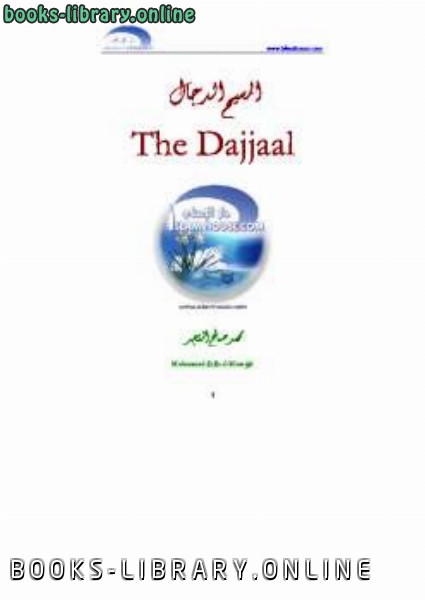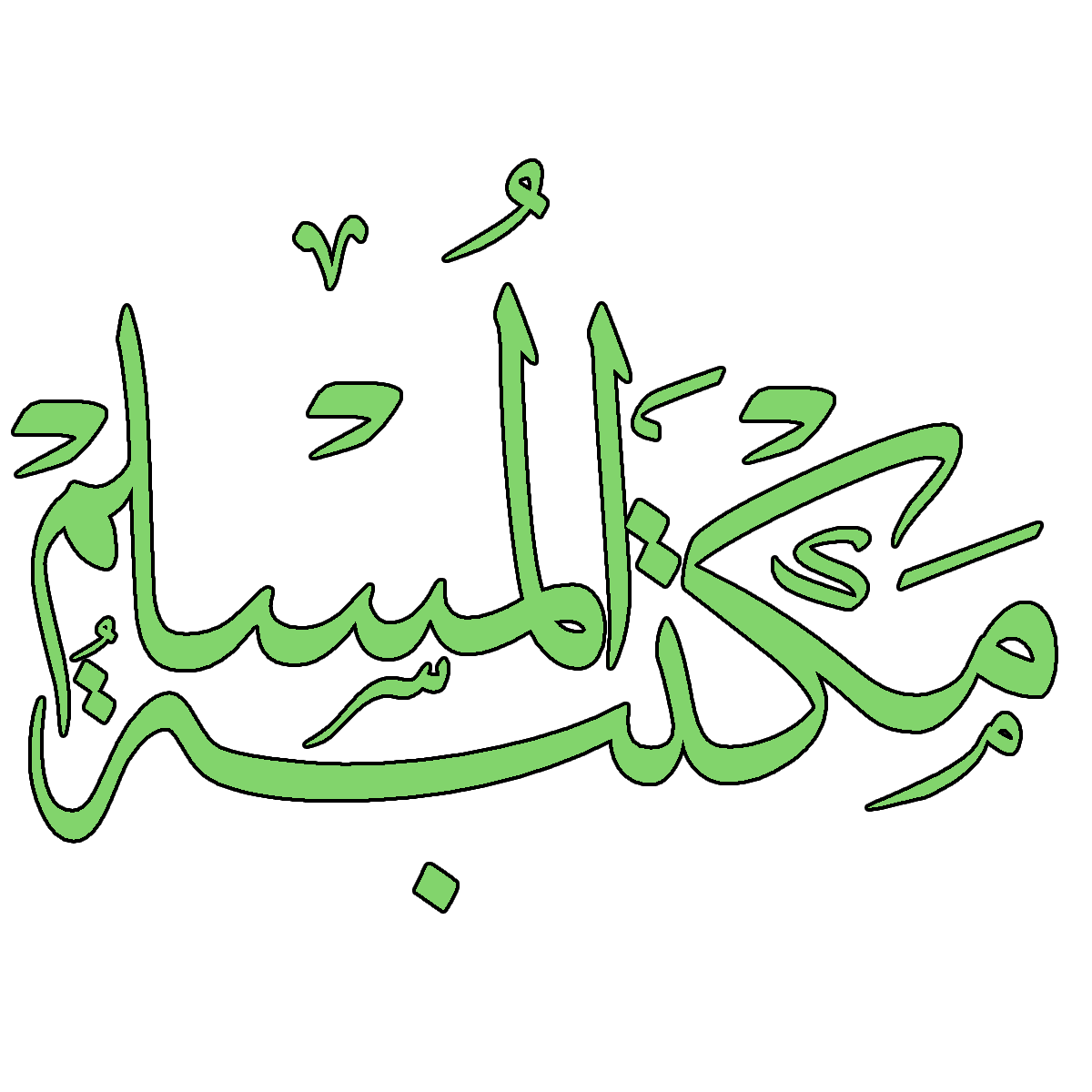📘 قراءة كتاب The Dajjaal أونلاين


There are over fifty scholarly comments on the meaning of the
word Maseeh (Messiah). They said that this word is applied
both to the Truthful One [True Messiah, i.e., ‘Eesa (Jesus)] and
to the misleading liar [the “antichrist” or Dajjaal]. The
Messiah is the Truthful One, ‘Eesa ibn Maryam (Jesus the son
of Mary), the Messiah of guidance, who healed those who
were born blind and lepers, and brought the dead to life by
Allah’s Leave. The false messiah (al-maseeh al-dajjaal) is the
liar who leads people astray, the messiah of misguidance who
will tempt people by means of the signs that he is given, such
as bringing down rain, reviving the earth to bring forth
vegetation, and other “miracles.”
So Allah has created two messiahs, who are opposites of one
another. The scholars said that the reason why the Dajjaal is
called maseeh (a “messiah”) is because one of his eyes is
mamsooh (lit. “wiped”; smooth or abraded, i.e., he will be
blind or defective in one eye). Or it was said that it is because
he will survey or travel throughout the earth (yamsah) in
forty days... The former view is more correct, because of what
was said in the hadeeth narrated by Muslim (no. 5221) from
Anas ibn Maalik, who said: “The Messenger of Allah () said:
‘The Dajjaal will be blind ( mamsooh) in one eye, and between
his eyes will be written ‘kaafir’...’”.
Meaning of the Word Dajjaal
The word Dajjaal is taken from the expression “Dajala al-
ba’eer (he smeared the camel)”, referring to when they
covered it with tar. The root dajala means to mix. The word
dajala is used to mean deliberately confusing matters and
being vague and ambiguous, The Dajjaal is the one who
speaks in vagaries, who tells many lies and deceives many
people. The word “Dajjaal” became a title given to the lying,
one-eyed, false messiah. The Dajjaal is so called because he
will conceal his kufr from the people by lying to them,
deceiving them and confusing them.
Description of the Dajjaal, and the Ahaadeeth
Narrated Concerning Him
The Dajjaal will be a man from among the sons of Adam. He
will have many attributes which were described in the
ahaadeeth to acquaint people with him and to warn them of
his evil. So when he comes, the believers will know him and
will not be misled by him. They will know his features which
the Truthful One (the Prophet) () has told us about. These
features will distinguish him from other people, so that no
one will be deceived by him except those who are ignorant
and whose doom has already been decreed. We ask Allah to
keep us safe and sound.
Among these attributes are: He will be a young man with a
ruddy complexion, short, with thick curly hair, a wide
forehead, and broad upper chest, blind or defective
(mamsooh) in the right eye. This eye will be neither
prominent nor sunken, and will look like a floating grape. His
left eye will be covered with a thick piece of flesh growing at
the edge of his eye. Written between his eyes will be “Kaaf
faa’ raa’ ( ،ر ف ك) ( ،K-F-R)”, in separate (Arabic) letters, or
“kaafir (آ ,“(with the letters joined. This will be read by
every Muslim, literate or illiterate. Another of his
characteristics will be that he will be sterile, with no children
born to him. The following are some of the saheeh ahaadeeth
in which the above attributes are mentioned. These ahaadeeth
form part of the evidence (daleel) concerning the emergence
of the Dajjaal: From ‘Abd-Allah ibn ‘Umar (), who said:
“The Messenger of Allah () said:
‘Whilst I was sleeping, I saw myself performing Tawaaf
around the Ka’bah, when I saw a dark man with straight
hair, standing between two other men, with water
dripping from his head. I asked: “Who is this?” They
said: “The son of Maryam.” Then I turned and saw a
ruddy-complexioned man, well built, with curly hair,
blind in his right eye, with his eye looking like a floating
grape. I asked: “Who is this?” They said: “This is the
Dajjaal.” The person who looks most like him is Ibnu
Qatan.’” (Narrated by al-Bukhaari, no. 6508; Ibn Qatan
was a man from Banu Mustalaq from Khuzaa’ah).
It was also narrated from Ibn ‘Umar () that the Messenger of
Allah () mentioned the Dajjaal to the people and said:
“Allah is not one-eyed, but the false messiah (al-maseeh
al-dajjaal) is one-eyed, blind or defective in his right eye,
with his eye looking like a floating grape...” (narrated by
al-Bukhaari, no. 3184).
In the lengthy hadeeth narrated by al-Nawwaas ibn Sam’aan
() it says:
“The Messenger of Allah () mentioned the Dajjaal one
morning. Sometimes he described him as insignificant
and sometimes he described him as so significant that
we thought that he was in the cluster of date-palm
trees...”
One of the features of the Dajjaal that he described was:
“He will be a young man with very curly hair, with his
eye floating. It is as if he looks like ‘Abd al-‘Uzza ibn
Qatan.” (Narrated by Muslim, no. 5228)
It was narrated from ‘Ubaadah ibn al-Saamit () that the
Messenger of Allah () said:
“I have told you so much about the Dajjaal that I fear
you will not understand. The Dajjaal will be a short man,
pigeon-toed, with curly hair. He will be one-eyed, with
his eye neither prominent nor sunken. If you become
confused about him, then remember that your Lord is not
one-eyed.” (Narrated by Abu Dawood, no. 3763. This
hadeeth is saheeh – Saheeh al-Jaami’ al-Sagheer, no.
2455).
Abu Hurayrah () said: “The Messenger of Allah () said:
‘... as for the false messiah, he will be one-eyed, with a
wide forehead and broad upper chest, and he will be
hunchbacked...’” (Narrated by Ahmad, no. 7564).
Hudhayfah () said: “The Messenger of Allah () said:
‘The Dajjaal will be one-eyed, blind or defective in his
left eye, with thick hair. He will have with him a
paradise and a hell, but his hell will be a paradise and
his paradise will be a hell.’” (Narrated by Muslim, no.
5222).
According to the hadeeth of Anas (), the Prophet () said:
“No Prophet was sent but he warned his people about
the one-eyed liar. He is one-eyed, but your Lord is not
A detailed description of the Dajjaal as mentioned in various ahaadeeth.
سنة النشر : 2004م / 1425هـ .
حجم الكتاب عند التحميل : 376.1 كيلوبايت .
نوع الكتاب : pdf.
عداد القراءة:
اذا اعجبك الكتاب فضلاً اضغط على أعجبني و يمكنك تحميله من هنا:

شكرًا لمساهمتكم
شكراً لمساهمتكم معنا في الإرتقاء بمستوى المكتبة ، يمكنكم االتبليغ عن اخطاء او سوء اختيار للكتب وتصنيفها ومحتواها ، أو كتاب يُمنع نشره ، او محمي بحقوق طبع ونشر ، فضلاً قم بالتبليغ عن الكتاب المُخالف:
 قبل تحميل الكتاب ..
قبل تحميل الكتاب ..
يجب ان يتوفر لديكم برنامج تشغيل وقراءة ملفات pdf
يمكن تحميلة من هنا 'http://get.adobe.com/reader/'


 منصّة المكتبة
منصّة المكتبة